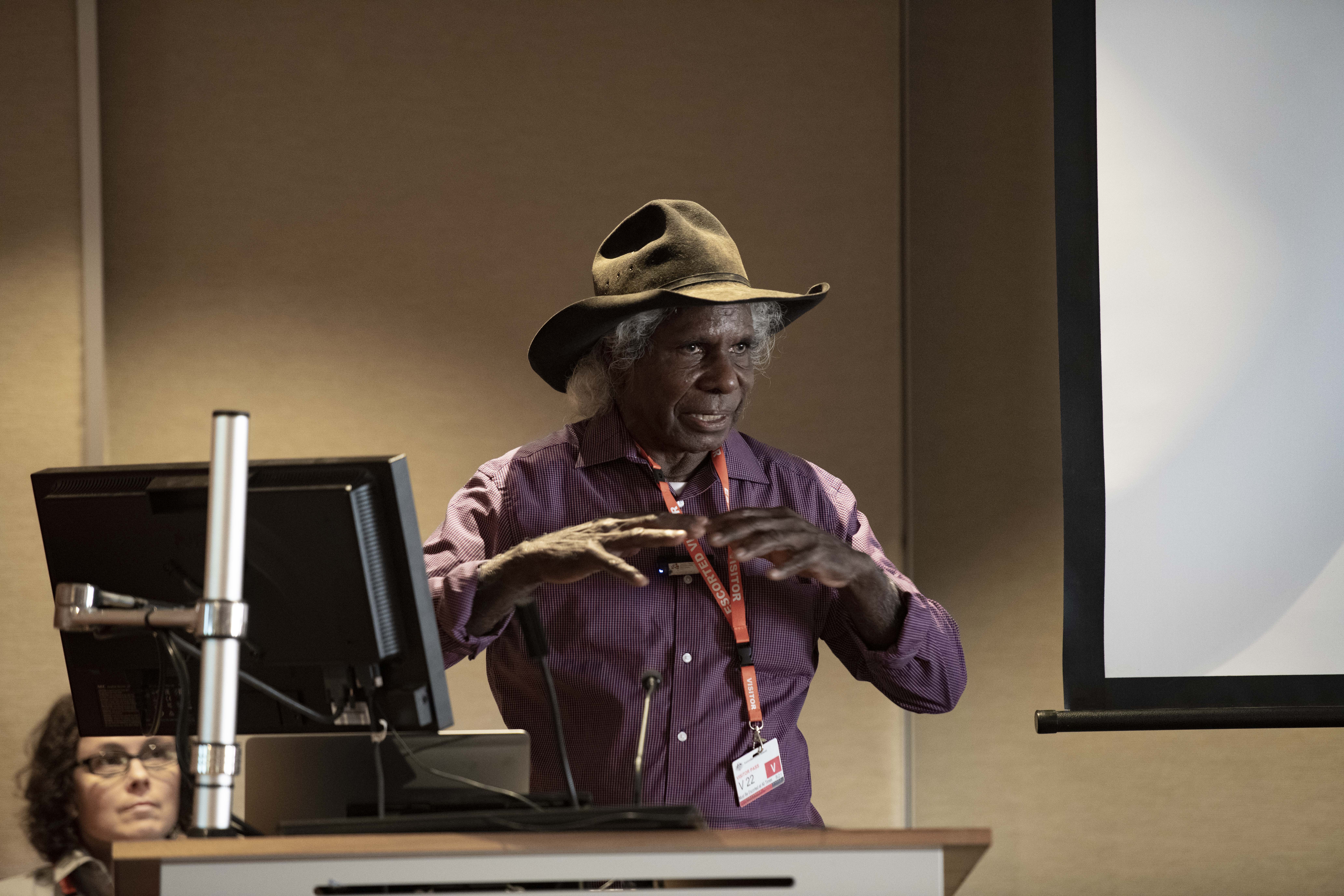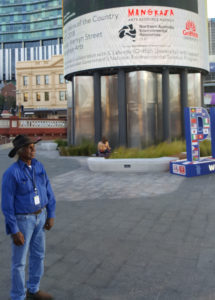“We’re all part of that river, we drink one water from the one main rainfall. Everybody.”
– Mervyn Street.

Mervyn Street presenting to Department of Climate Change, Energy, the Environment and Water staff before sharing the Veins of the Country video. Photo by NESP Northern Hub.
The words above are the closing words of Veins of the Country, a captivating short film that explores Aboriginal peoples’ relationships with water in the Kimberley’s Fitzroy River catchment, and people’s relationships with water more generally.
The film is narrated by Mervyn Street, Traditional Owner, Gooniyandi artist and Chairman of Mangkaja Arts in Fitzroy Crossing. Mervyn is working with Hub researcher and film-maker Dr Sarah Laborde to help explain the relationships between water, people and places along the Fitzroy River. Other individuals and groups are also contributing to this work, led by Professor Sue Jackson, which is supporting Indigenous water management in the catchment and aims to inform the first water allocation plan developed for the river.
The film’s heartfelt narration and outstanding artistic merit work together to help viewers understand the rhythms of water and life in the Fitzroy catchment and the importance of the river, not only to sustain life, but also to connect people. Its message is soft but strong – rather like water itself.
The film has already touched a wide cross section of audiences. It received an award for the ‘best environmental message’ at Broome’s 2018 Mud and Saltwater Film Festival, and recently Mervyn shared the film and its meaning in the ‘Artists in Conversation’ session of the Revealed Exhibition in Western Australia. The Art Gallery of Western Australia also showed the film every hour on a public screen in Yagan Square, Perth CBD, as part of the WA Art Gallery’s Desert River Sea: Portraits of the Kimberley exhibition. This exhibition has been described as,
The stand-out event in the [Perth] 2019 visual arts program.
– (Sydney Morning Herald 02.03.19).

Mervyn in Yagan Square, Perth where the film was shown on the screen in the square. Photo by Karen Dayman.
Other popular screenings have been held at the Australian Institute for Aboriginal and Torres Strait Islander Studies and the University of Sydney, and more screenings are planned.
The Martuwarra Fitzroy River Council, which represents Aboriginal interests in the planning and management of the Fitzroy River, invited Mervyn to present the film to them. Its messages about the importance of water and about the deep connections people have with water in the Fitzroy Valley support the Council’s work on protecting the values of the river.
Mervyn travelled to Canberra to present the film to government policy-makers at the Department of the Prime Minister and Cabinet and the Department of Climate Change, Energy, the Environment and Water. Comments from these audiences reflect how the film powerfully articulates personal connections with water, and more far-reaching connections, that are important for policy and programs.
The film continues to stimulate conversations about the interfaces between water, people, policy and art and, while doing so, draws attention to the important work of NESP in promoting Indigenous research collaborations, and in caring for Country, across Australia.
Research outputs
Factsheets
Project webpage
Attributions
![]()